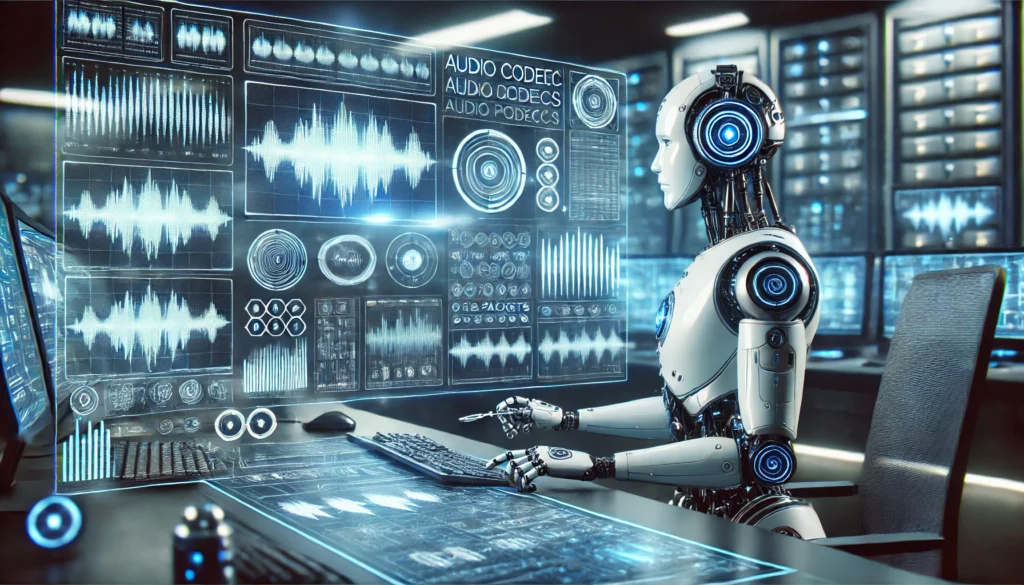The Future of AI in Voice Communication: A Crystal-Clear Connection
AI is transforming many industries, and the voice communication sector is primed for a major shift. With advancements in AI-driven voice technology, we’re looking at a revolution in how we connect, understand, and interact with each other across distances. Here’s a look at what the future holds.
The Voice Industry’s Game-Changer: AI Voice Codecs
One of the most exciting innovations in voice tech is the AI voice codec. A codec (coder-decoder) is what turns audio into data for transmission, then decodes it back into sound on the other end. Traditionally, voice codecs were designed to compress audio as much as possible, sacrificing details to save data. But now, AI codecs can transmit even the smallest details in voice with remarkable efficiency.
Imagine a codec so advanced that even if just a “whisper” of data is transmitted, AI on the receiving end can reconstruct the sound in all its richness and clarity. AI voice codecs adapt in real time, “filling in” lost bits to create a continuous, fluid sound—even if your connection is far from ideal. This opens up possibilities for the clearest voice calls imaginable, even over low-bandwidth networks.
Breaking Down Barriers: Translation and Transcription in Real-Time
AI’s capabilities in natural language processing have paved the way for real-time language translation and transcription. Imagine joining a global call where each participant speaks in their native language, and your AI-powered device translates it instantly, allowing fluid conversations across language divides. In customer support, global collaboration, or any multicultural setting, real-time AI translation can break down barriers, making communication seamless.
Transcription is another area where AI is making strides. AI-powered transcription tools are already providing near-instantaneous, highly accurate transcriptions of meetings, calls, and interviews. But with improvements in contextual understanding, these systems will become more sophisticated. Future AI-driven transcription tools could identify and differentiate between multiple speakers, recognize specialized industry terms, and even highlight key points in conversations—all while you’re still on the call.
Intelligent voice conversation with AI voice assistant: The Secret to Connection Anywhere
Imagine an AI assistant that truly knows you—capable of screening and even responding to calls on your behalf. This personalized AI could intelligently assess if the caller needs to reach you directly or if it can manage the conversation independently. For example, it could confirm a booking, provide requested information, or even offer initial customer support, all while keeping you informed. AI-driven voice interaction becomes more than a tool; it’s an extension of you, facilitating genuine connection anytime, anywhere.

Personality-Infused Communication: AI Deepens the Voice Connection
One of the most fascinating aspects of AI in voice communication is its ability to capture and recreate the subtleties that make each voice unique. AI can analyse voice characteristics—like tone, pace, and inflection—and “reconstruct” them if they’re degraded in transmission, creating an audio experience that feels as rich as the original. You could hear the emotion in your friend’s voice or recognize a colleague’s enthusiasm, even over a low-quality connection.
In the not-too-distant future, AI will be able to add even more nuance, helping devices interpret non-verbal cues and adapt responses accordingly. Customer service representatives could sound friendly and reassuring even in automated interactions, and business meetings could feel more natural and personal.
A Look Ahead: AI Voice Technology in Everyday Life
As AI-driven voice tech advances, we’ll see benefits across many areas of life. Here’s a sneak peek:
Customer Service: Personalized voice responses that recognize the caller’s language, tone, and even intent—making each experience seamless and highly tailored.
Global Communication: Effortless real-time translation and clear, uninterrupted calls with anyone, anywhere in the world.
Accessibility: Instant transcription for the hearing-impaired and enhanced voice services that provide people with disabilities an easier, more natural communication experience.
Remote Work: Crystal-clear conference calls without interruptions, even with participants scattered around the globe, ensuring smooth and effective collaboration.
Challenges and the Road Ahead
Of course, integrating AI into voice communication doesn’t come without challenges. Privacy and security are top concerns, as more detailed voice data means more potential exposure. But as developers innovate, they are focused on encryption, secure data handling, and maintaining user trust.
Another challenge is ensuring that AI models are inclusive and can understand diverse accents, dialects, and speech patterns. It’s critical that future AI systems represent and accurately interpret a wide range of voices from around the world.
The Clear Choice for the Future
The future of voice communication will be one where language, distance, and connection quality are no longer barriers. AI is moving us toward an era where every call, whether it’s with a loved one or a colleague across the globe, feels like you’re right there in the same room. As AI voice technology evolves, it will make the way we connect richer, clearer, and more human. The days of muffled conference calls and dropped syllables are on their way out—ushering in an era where our voices are the clearest they’ve ever been.



